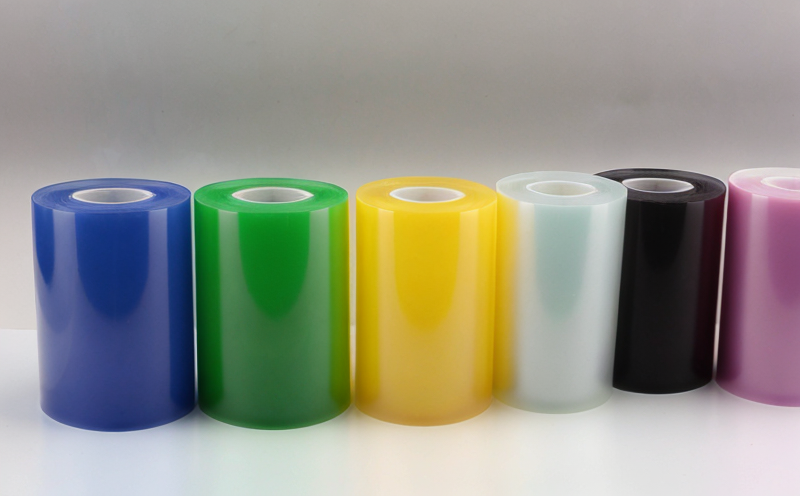DIN 53363 Tear Propagation Testing of Plastic Films
The DIN 53363 standard is a critical tool in the evaluation of plastic films and sheets, specifically focusing on their tear propagation characteristics. This test assesses how a material behaves when subjected to a cut or tear, examining its resilience against further damage as it propagates through the film.
This type of testing is essential for industries that rely heavily on packaging materials, medical devices, and consumer goods where durability and integrity are paramount. By understanding these properties, manufacturers can ensure their products withstand harsh conditions without compromising safety or performance.
The test method described in DIN 53363 involves creating a defined cut across the width of a specimen using a sharp blade. The resulting tear then spreads along the length of the film under specified load conditions. Specimens are typically clamped at both ends to simulate real-world stress situations such as those encountered during packaging or handling processes.
Testing according to DIN 53363 provides valuable insights into several key attributes including:
- Tear resistance
- Penetration distance of the initial cut
- Propagation length following the initial cut
- Cohesive failure strength and energy absorbed during propagation
The results generated by this test help inform decisions about material selection, process optimization, and quality assurance. For instance, if a particular plastic film demonstrates poor tear propagation characteristics, it may indicate issues with its molecular structure or manufacturing process that need addressing.
It is important to note that the DIN 53363 method is applicable not only to polyolefin-based films but also to other thermoplastics commonly used in these applications. Compliance with this standard ensures consistency across production batches and helps maintain high standards of quality control.
In summary, DIN 53363 tear propagation testing plays a crucial role in ensuring that plastic films meet strict requirements set forth by industry regulations while providing manufacturers with actionable data to improve their products continuously.
Benefits
- Enhances product durability and longevity
- Promotes compliance with international standards
- Aids in identifying manufacturing flaws early on
- Simplifies quality assurance processes
- Improves overall efficiency by minimizing rework cycles
- Supports continuous improvement initiatives
- Paves the way for innovation and development of new formulations
- Contributes to safer consumer experiences
Customer Impact and Satisfaction
The implementation of DIN 53363 tear propagation testing has a significant positive impact on customer satisfaction. When products are designed with this test in mind, they tend to perform better under stress conditions, leading to fewer returns or replacements.
Moreover, compliance with international standards like DIN 53363 can enhance brand reputation and trust among consumers who value quality assurance practices. This testing also supports the development of safer products which contribute towards overall customer satisfaction.
Environmental and Sustainability Contributions
Through improved tear resistance, manufacturers can design more efficient packaging solutions that minimize waste while enhancing recyclability. Longer-lasting products mean less frequent replacements, reducing both resource consumption and landfill contributions.
Better materials result in better performance, which translates into lower energy consumption during manufacturing processes. This contributes to overall sustainability efforts by promoting circular economy principles and responsible resource use.





